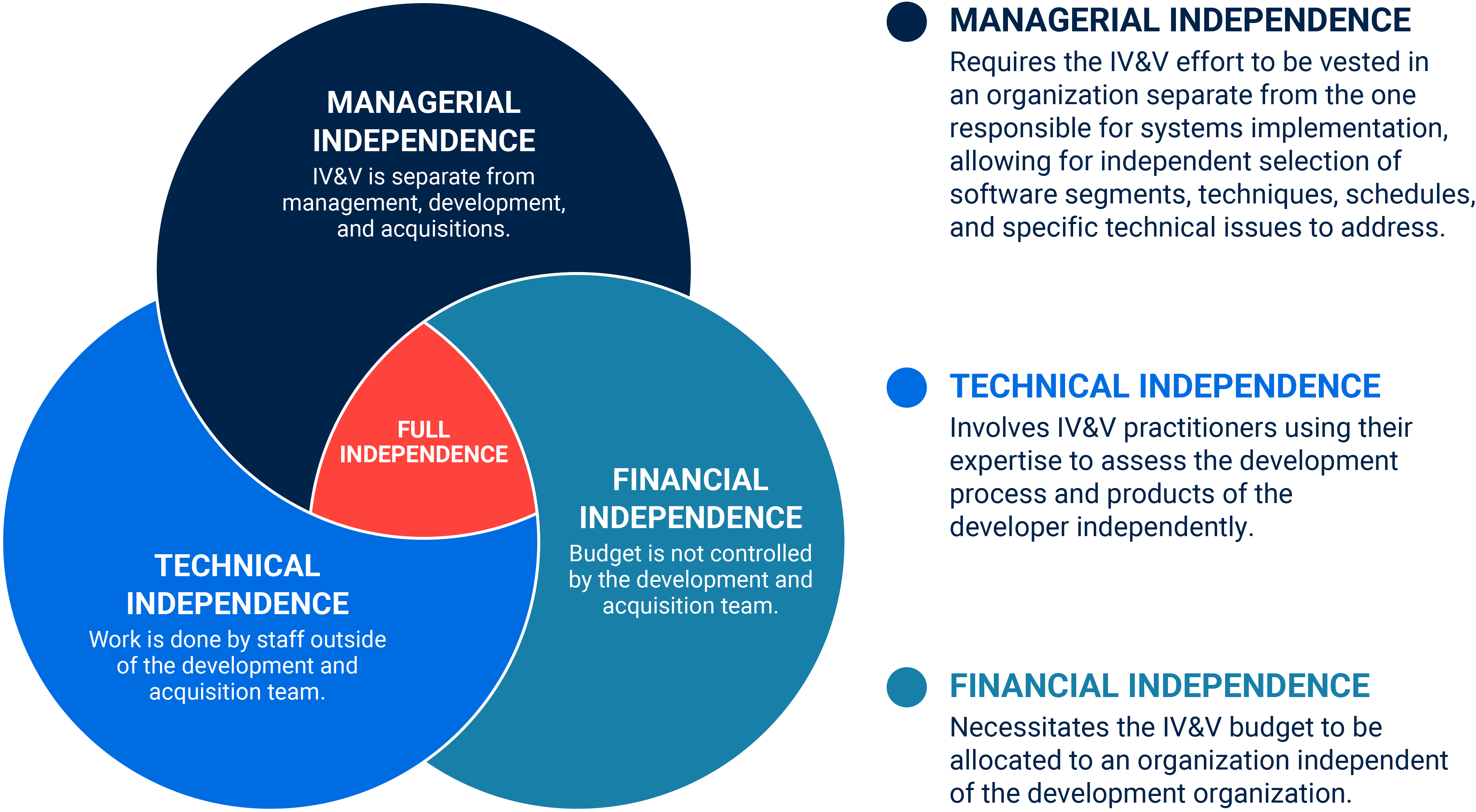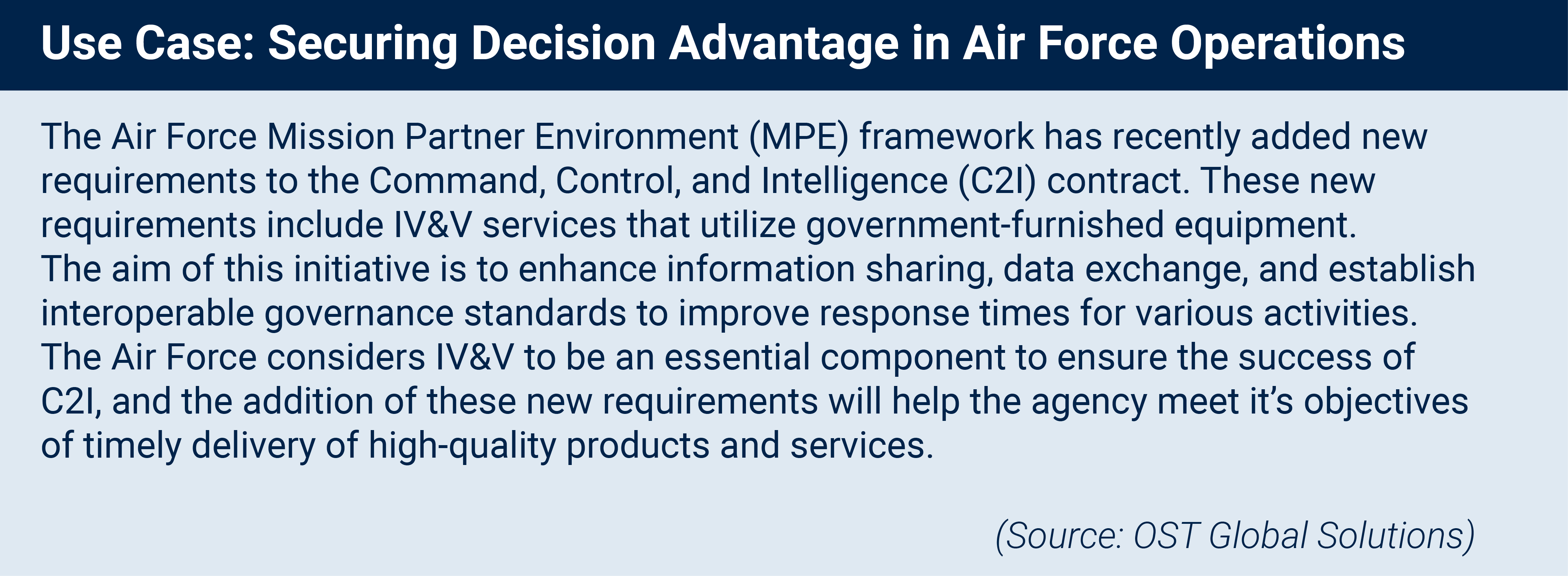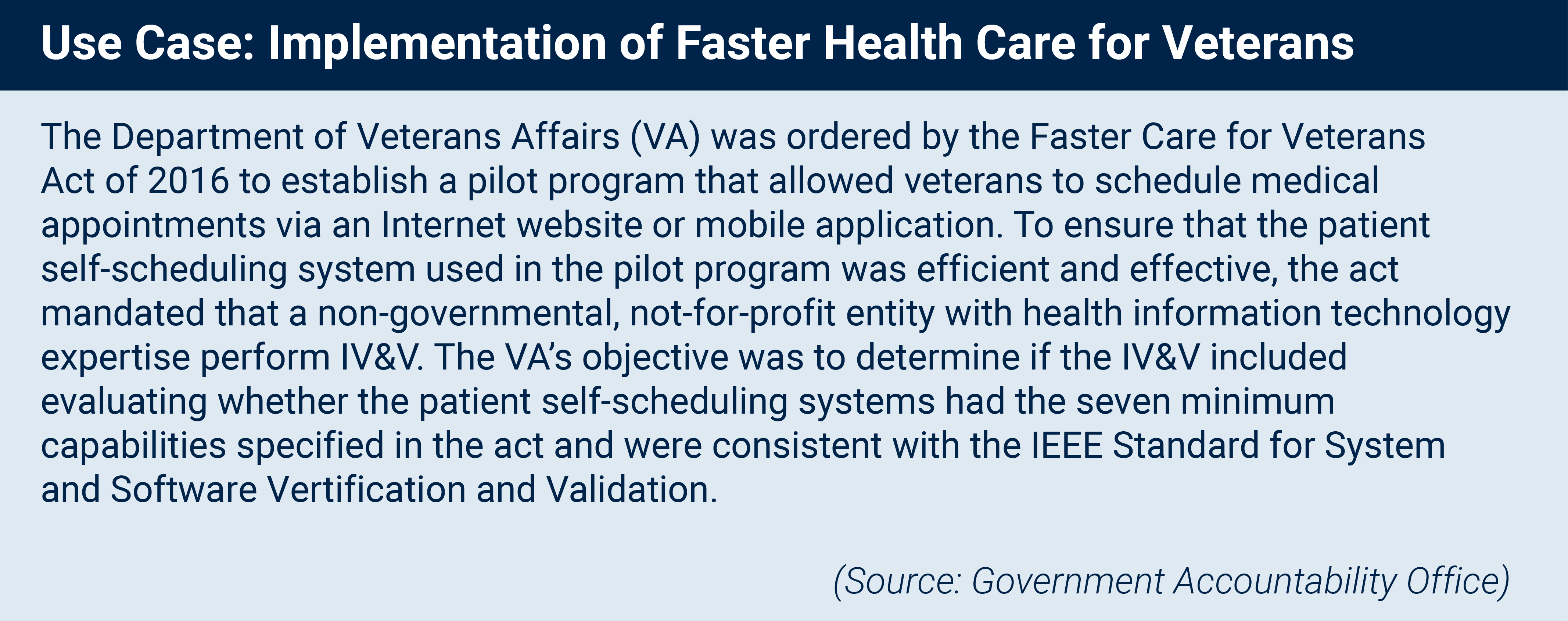Simply put, verification answers the question, “Are we building the product, right?” whereas validation answers, “Are we building the right product?” The primary goal of verification and validation is to ensure that system requirements are correctly defined, and that the software implements all the necessary functionality and security measures. By evaluating these software products throughout the Software Development Life Cycle (SDLC), agencies can help minimize the risk of system errors and failures.
In defining IV&V independence, the General Accountability Office (GAO) cites three aspects for government systems development projects to consider:
By following these principles, REI aims to provide reliable IV&V services to ensure the quality and effectiveness of systems development projects. We utilize vigorous IV&V methodologies to evaluate the quality of software products throughout the SDLC. By identifying high-risk areas early, IV&V enables government to make informed decisions when dealing with system development issues which can increase the likelihood of overall mission success. Additionally, IV&V ensures visibility into the development progress and quality and reduces errors in delivered products.
The Value of IV&V for Government Agencies: Ensuring Successful System Development Projects
Implementing IV&V activities within government agencies’ IT departments can significantly mitigate the risk of deploying systems that fail to meet their intended purpose or do not perform as expected. However, managing numerous information systems and projects, especially complex ones that combine custom and commercial elements, presents challenges further complicated by ever-changing technology and compliance requirements. Large-scale IT projects’ lengthy completion times also increase the risk of stakeholder expectations shifting, leading to the initially envisioned products, services, or systems no longer satisfying agency-specific objectives. Despite these challenges, adopting IV&V practices can enhance the following:
• Increased confidence in error-free product delivery that meets agency needs.
• Early detection of high-risk errors in the development cycle.
• Ongoing reporting of status indicators and performance to decision-makers such as program managers, giving incremental previews of system performance to make early adjustments.
• Reduction of rework costs from contractors, leading to program and project cost savings.
• Facilitation of the transfer of best practices in software and system development.
An IV&V vendor can be instrumental in helping an agency’s staff identify and overcome these challenges that may hinder the success of a system development project. Vendors can quickly detect problems or issues that may derail project progress through reports that inform agency leadership of any process or product risks that require timely intervention or close monitoring. Incorporating routine and recurring IV&V activities can ensure that agencies deliver their products or software services promptly.
Many computer science, engineering, and technology organizations, including the Institute of Electrical and Electronics Engineers (IEEE) and the Capability Maturity Model Integration Institute (CMMI), consider IV&V a best practice for system development. The Clinger-Cohen Act of 1996 also recommends outsourcing for IV&V support in its Project Management Handbook for Mission Critical Systems.
The GAO consistently recognizes the value of IV&V as a leading practice for government agencies in acquiring complex or high-risk programs. The Department of Homeland Security (DHS) reports that IV&V can provide project management with an objective assessment of processes, products, and risks throughout the system development lifecycle – promoting conformance to program performance, schedule, and budget targets.
Navigating Complexity: The Importance of IV&V for Government Technology Projects
Government agencies face numerous challenges in managing their myriad information systems and projects. Beyond their complexity, IT systems often feature a mix of custom and commercial components that must interoperate with systems implemented by other organizations. The fast pace of technology and rigid compliance criteria add even more complexity to the mix.
Moreover, major IT projects often take a long time to complete, and initial assumptions about the operating environment may evolve, or stakeholder expectations may change. As a result, products, services, or systems as initially conceived may no longer meet the stated requirements or deliver their intended purpose. Utilizing IV&V has proven to be a highly effective practice within government. Its ability to identify high-risk areas early in a project effort allows agencies to make informed decisions and prepare contingencies.
Additionally, when government agencies are determined to accelerate product releases by adopting methodologies such as agile and CI/CD, IV&V plays a crucial role in ensuring the delivery of the right product to users. This requires IV&V to be lean, flexible, and actively involved in providing feedback and participating in stakeholder meetings.
IV&V offers accountability and fact-based decision-making for technology initiatives, resulting in valuable technology systems supporting government’s growth and its operations. Adopting IV&V is crucial for any agency looking to ensure the success of their technology projects.







